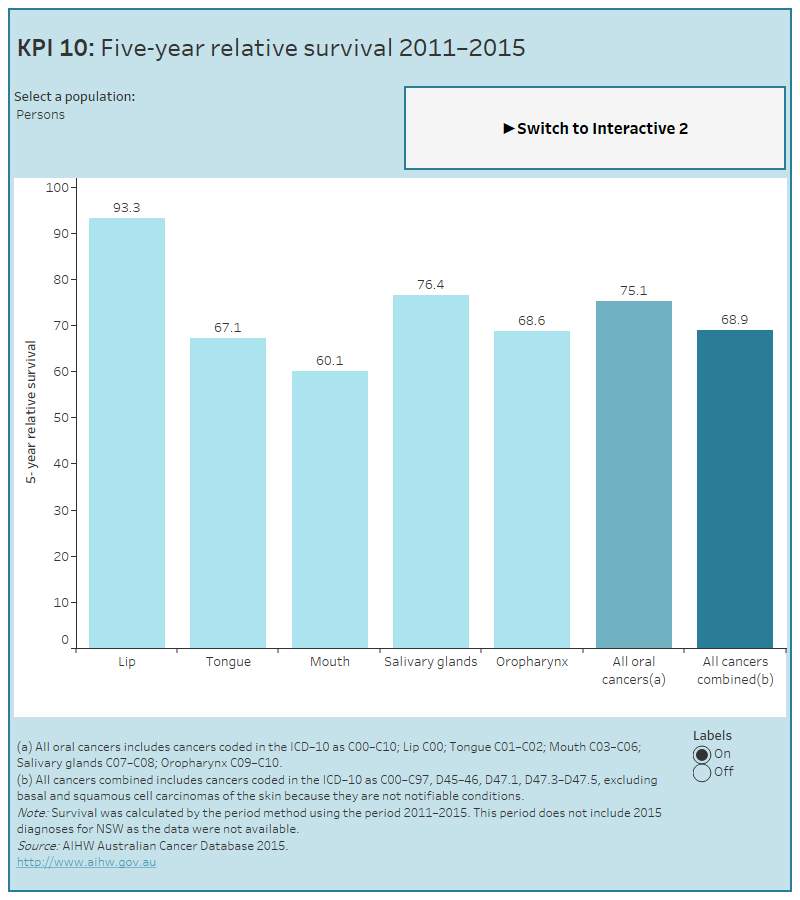Oral cancer relative survival rate
KPI 10: The relative 5 year survival rates for people diagnosed with oral cancer
Cancer was the leading cause of total disease burden in Australia in 2015 (AIHW 2019). Treatment can be more effective when cancer is detected early, and dental practitioners play an important role in this. Cancer of the lip, tongue, mouth, salivary glands and oropharynx are those cancers that are detectable in an oral examination by a dental practitioner. Early detection is one of the factors associated with better cancer survival.
High 5-year relative survival is used as a proxy measure of early detection because population-level data on the stage at diagnosis of oral cancers are not currently available.
The 5-year relative survival rate in 2011–2015 for all selected oral cancers was 75%, compared to 69% for all cancers combined. In 2015, there were 3,407 cases of selected oral cancers, including 935 cases of lip cancer making it the most common oral cancer in this group.
Explore the data using the interactives below:
KPI 10 Interactive 1: Five-year relative survival 2011–2015
This figure shows the five-year relative survival for oral cancers for the period 2011–2015, by sex. The five-year relative survival rate in 2011-2015 for all selected oral cancers was 75%.
KPI 10 Interactive 2: Age-standardised 5-year relative survival trend
This figure shows the age-standardised 5-year relative survival trend for all selected oral cancers and for all cancers combined, between 1986-1990 and 2011-2015. Between 1986–1990 and 2011-2015, the age-standardised 5-year relative survival rate for all selected oral cancers increased from 66% to 73%.
KPI 10 Interactive 3: Oral cancer incidence and mortality, 2015
This figure shows the 2015 incidence and mortality of selected oral cancers in Australia. Both the number and age-standardised rate per 100,000 population data is presented, by sex and cancer site. In 2015, there were 3407 cases of selected oral cancers in Australia.

Data tables available for download.
More information about oral cancers.
References:
Australian Institute of Health and Welfare 2019. Australian Burden of Disease Study: impact and causes of illness and death in Australia 2015. Cat. no. BOD 22. Canberra: AIHW.
|
Definition |
The relative five year survival rates for people diagnosed with oral cancer Numerator Denominator |
|---|---|
|
Desirable rate |
High |
|
Data sources |
ACD (AIHW) NDI (AIHW) ABS |
|
Inclusions |
Cancer type (1) |
|
Exclusions |
None |
- Australian Consortium for Classification Development (ACCD). The International Statistical Classification of Diseases and Related Health Problems, Tenth Revision, Australia Modification (ICD–10–AM). Adelaide: Independent Hospital Pricing Authority.


